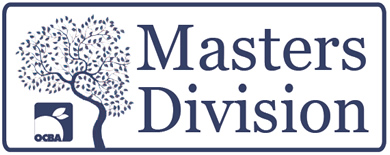Even Nuns Defame; An Example of How Witness Credibility is Everything

The report of this defamation caught my eye because of the parties involved. There is a standard joke among attorneys, that if you find yourself suing widows, orphans or nuns, your practice has probably taken a bad turn. In this case, nuns were being sued for defamation.
It started when the nuns decided to sell an old painting they had laying around. The painting was in really bad shape, not even worth hanging, but it turned out to be by a well regarded artist, William-Adolphe Bouguereau. So the nuns had it appraised by an art dealer named Mark LaSalle. Based on his appraisal, the nuns agreed to sell the painting to Mark Zaplin for $450,000. Zaplin had the painting restored to its former glory, a fact that I think is crucial to this case, and turned around and sold it for $2.15 million, netting a tidy little profit.
The nuns sued LaSalle and Zaplin under a number of theories, claiming that Zaplin had been a straw buyer, and that LaSalle was working in concert with Zaplin and had conned the Daughters of Mary by intentionally under-appraising the painting in order to buy it at a bargain price. The two Marks counter-sued for defamation, because the nuns had made these same claims to the media. (In case you’re new here, you can never sue for defamation for things said in conjunction with a lawsuit, since those statements are privileged, but you can sue if the same statements are made to the media.)
Here is the part I find interesting and the main reason for this article. The nuns had a witness. An art dealer by the name of Paul Dumont claimed to know both LaSalle and Zaplin, and testified that LaSalle had told him that they could “make a handsome profit by giving the sisters a low appraisal value of between $350,000 and $450,000 and presenting a buyer who would pay the amount of our deliberate and intentionally inaccurate appraisal.” He claimed that LaSalle had asked him to find a “money man” who would act as a straw buyer.
Wow. Pretty strong stuff. So the nuns must have won, right? Actually, they went down in flames (can I say that about nuns?). A New York jury found against them on all of their claims, and instead awarded LaSalle $250,000 for defamation against Dumont and a church Bishop, and awarded Zaplin $75,000 against Dumont for defamation. LaSalle will also recover punitive damages.
But how can that happen with a witness who is specifically corroborating the story of the fraudulent appraisal and straw buyer? And therein lies the moral of this story.
Trials are always about witness credibility. People come up with crazy tales and, yes, they lie. As a judge or a juror your task is to decide who is telling the truth. I see this happen a lot in court, where someone makes up a story that is completely implausible, and one red flag of a false story is the claim that someone admitted to wrongdoing. You see, apart from hard core criminals, most people don’t want to acknowledge that they are doing something wrong, even to themselves. During my time working as a police officer and now as an attorney, I have spoken to a very large number of criminal and defendant wrongdoers. In one particularly active week, I caught two murderers, each of whom had just killed the guy their wife was having an affair with, and even those guys explained to me why what they had done was not wrong.
With that in mind, take a look at the statement made by Dumont about what was supposedly said by LaSalle. If LaSalle’s plan had been to buy this painting cheap through a strawman and then sell it at a profit, his statement to Dumont would have gone something like this:
“Hey, I’ve been asked to appraise a painting that is in pretty bad shape, so in it’s current condition I’m going to have to give it a pretty low number, but if this thing were restored I think it would sell at a nice price. I wouldn’t mind getting in on that, but I need a buyer who can afford to buy the painting even at the lower price, and who will work with me to restore it and turn it around for a profit. Know anyone?”
That is how one would pitch this sort of scheme. LaSalle would have rationalized that he wasn’t doing anything wrong; that someone was going to make a killing with this painting once it was restored so it might as well be him. No one goes to someone and says, “I’m going to cheat nuns by providing a ‘deliberate and intentionally inaccurate appraisal.’” It’s just contrary to human nature, and it is by examining statements in that light that judges and jurors see through the lies.
Now, so that I don’t get sued for defamation, this is just a hypothetical. I am not stating or implying that Dumont was lying or that LaSalle was engaging in any sort of scheme. I would have no way of knowing either. I use this case only as an illustration of how the jurors could have reached their verdict even in the face of such damning testimony.
Update: I came across a far more detailed telling of the story of this painting, which was published a few months after my article. The summary differs slightly from my information, and since it was from the attorneys who handled the case, I would accept their version. For instance, there were actually two restorations of the painting. The nuns paid $14,000 to restore the painting at the recommendation of LaSalle. It appears that LaSalle was able to get a higher price from Zaplin following that restoration, because it revealed exactly what the nuns had. Then, Zaplin spent another $50,000 in further restoration of the painting and on a frame. He loaned it to a museum for several months before receiving an offer. It’s not as though he immediately flipped it. As stated, he eventually sold it for $2.1 million, to an art dealer named Brian Roughton. And here is the fun part. Roughton then sold the painting for an undisclosed amount, reported to be around $5 million. That was known at the time of trial, so counsel actually had to show that the appraisal price of $450,000 was reasonable, even though the painting sold for $5 million eight months later. Counsel explained this away by simply pointing out that prices are unpredictable in the art world, and paintings are often sold for far more than they are worth. That does not prove that the appraisal was made in bad faith.


Leave a Reply